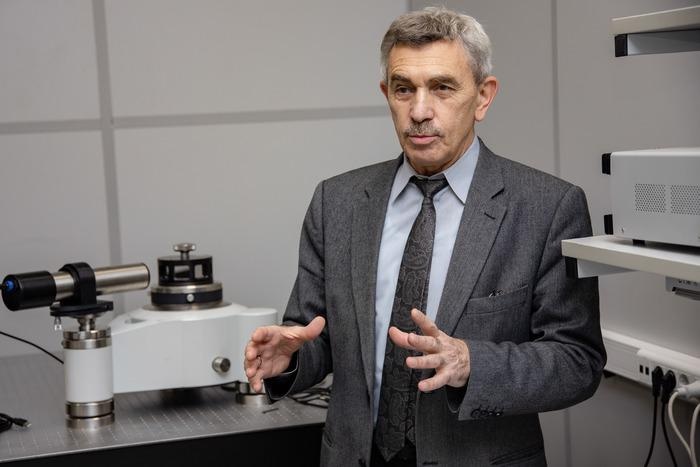In the contemporary world, several digital rotary encoders are available to measure the angle of any rotating objects with high precision and to convert this data into a digital format for further processing.
 Yuri Filatov, Head of the Department of Laser Measurement and Navigation Systems at LETI. Image Credit: Saint Petersburg Electrotechnical University.
Yuri Filatov, Head of the Department of Laser Measurement and Navigation Systems at LETI. Image Credit: Saint Petersburg Electrotechnical University.
In various industries ranging from automobile manufacturing (for instance, to determine the angle of rotation of a steering wheel) to computer engineering (to determine the angle of rotation of a computer mouse wheel), several kinds of encoders are used. Precise calibration is required to achieve the desired use but no such uniform technique is in place.
We have developed a mathematical model that can be used to calibrate rotary encoders that are widely used for precise rotations in all areas, from platforms to antennas and telescopes.
Yuri Filatov, Head, Department of Laser Measurement and Navigation Systems, Saint Petersburg Electrotechnical University
The study was published in the journal Optical Engineering.
The researchers propose the usage of a dynamic goniometer to calibrate encoders with different types of interfaces (parallel or serial) as a reference sensor for determining the rotation angle at varying speeds.
The goniometer is a device used for high-accuracy measurements of angles between objects. The yielded data is processed using a unique algorithm to calibrate encoders with different interfaces. A dynamic goniometer was used by the scientists to reveal the effectiveness of the approach.
Previously, there was no international methodology that would fit all encoders; each type required its own model to calibrate. Perhaps gradually such a standard will emerge, and we offer one way to create it. The advantage of our model is its versatility — it can be used to calibrate any encoder, and in this respect, it has no analogs.
Yuri Filatov, Head, Department of Laser Measurement and Navigation Systems, Saint Petersburg Electrotechnical University
Journal Reference:
Pavlov, P. A., et al. (2021) Calibration of rotary encoders with different interfaces by means of laser dynamic goniometer. Optical Engineering. doi.org/10.1117/12.2573782.